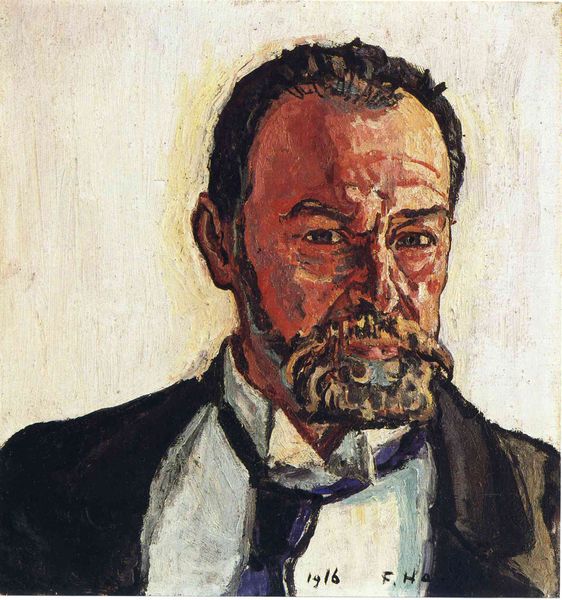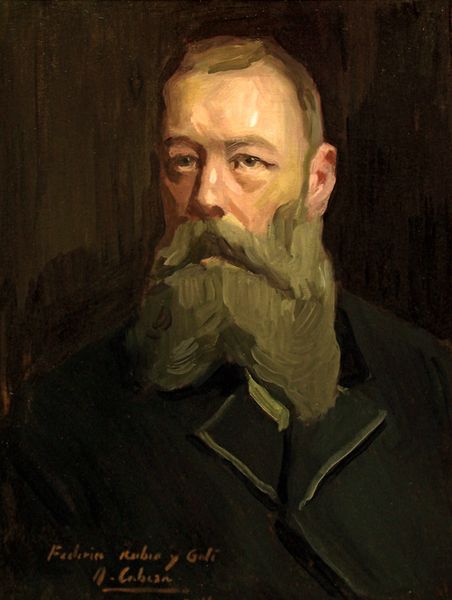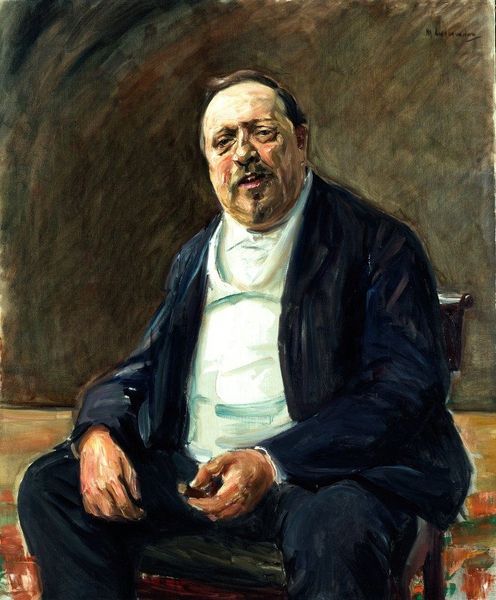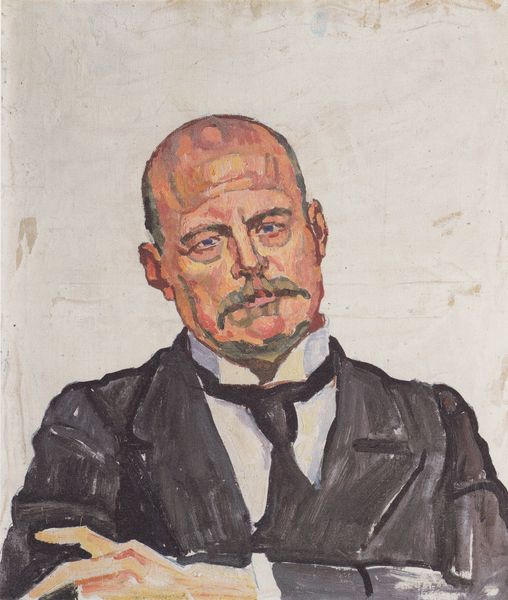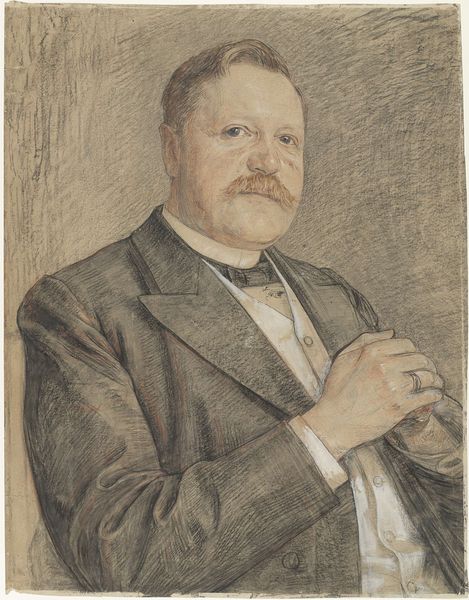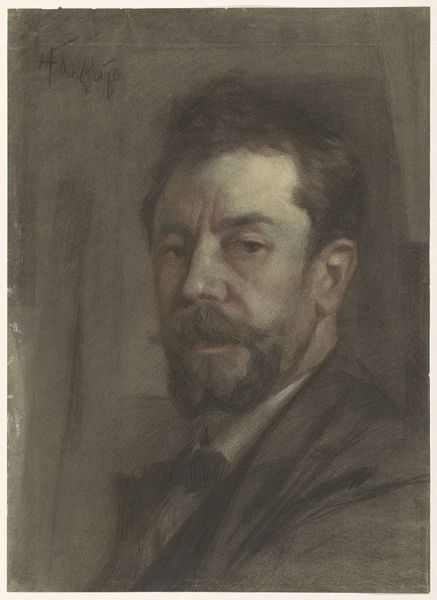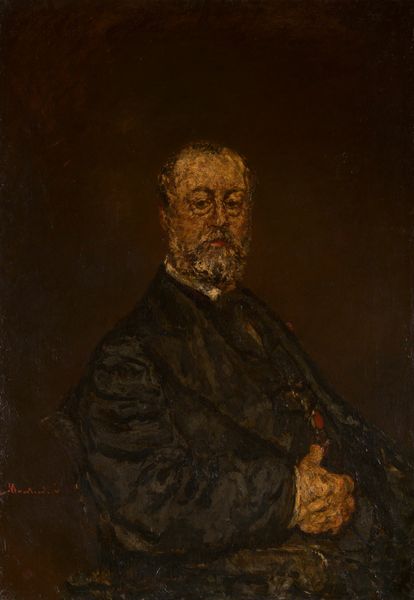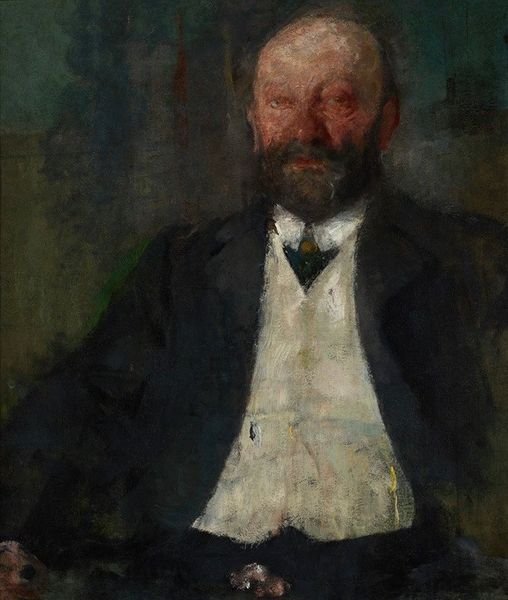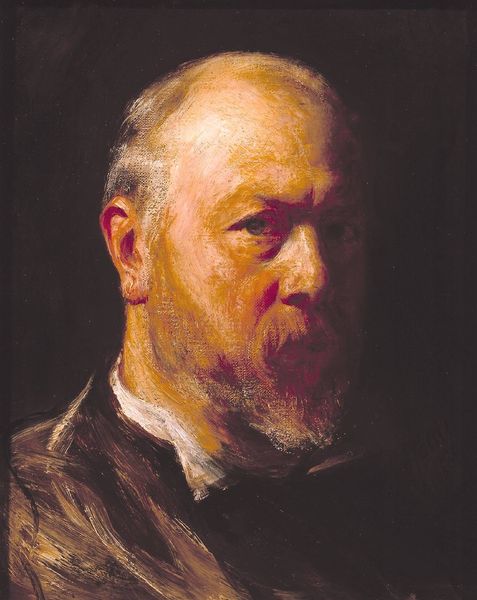
painting, oil-paint
#
portrait
#
self-portrait
#
painting
#
oil-paint
#
expressionism
#
modernism
Dimensions: 93 x 60 cm
Copyright: Public domain
Editor: This is Ferdinand Hodler's "Self-portrait" from 1916, oil on canvas. The raw brushstrokes and slightly unsettling gaze give it a powerfully intimate feel. As if he’s both presenting himself and questioning his own image. What do you make of it? Curator: Well, Hodler’s self-portraits, particularly those from his later years, are incredibly significant historical documents. They reveal not just his physical appearance but also provide commentary on the role of the artist, particularly within the context of early 20th-century modernism and a shifting socio-political landscape in Europe during World War I. Editor: How so? Curator: Consider the way Hodler presents himself. The direct gaze, the unflinching self-examination... This wasn’t merely about vanity; it was a deliberate attempt to confront mortality and use self-representation as a tool to negotiate and, in a way, control his image in the public eye. It was also his exploration of symbolism during that era. Think about the public function of art at this time; artists were struggling to redefine their purpose. Editor: So, the "Self-portrait" isn’t just about Hodler, but also about the role of the artist during a major conflict. Curator: Precisely. It is through this very personal, even vulnerable, presentation that Hodler perhaps seeks to redefine art's role to engage directly with life and death in a world torn apart. What do you think that artists are trying to achieve in the art industry nowadays? Editor: Wow, I had only seen the surface! Now I see so many different layers beyond the purely visual experience of it.
Comments
No comments
Be the first to comment and join the conversation on the ultimate creative platform.
